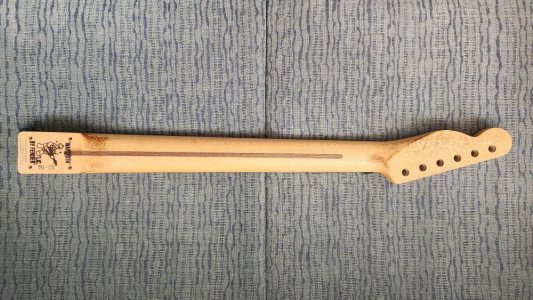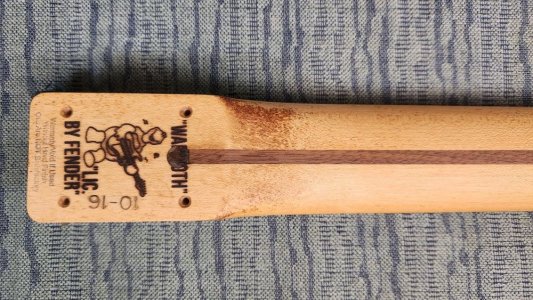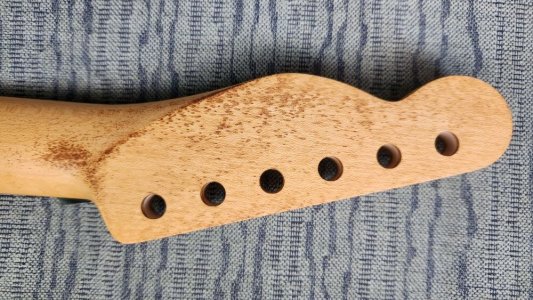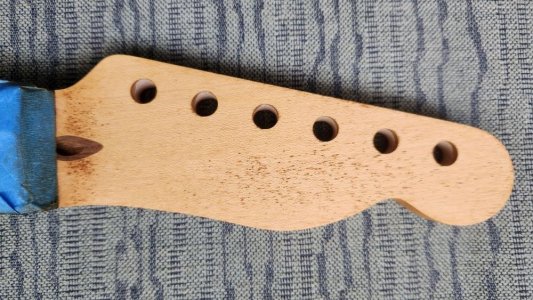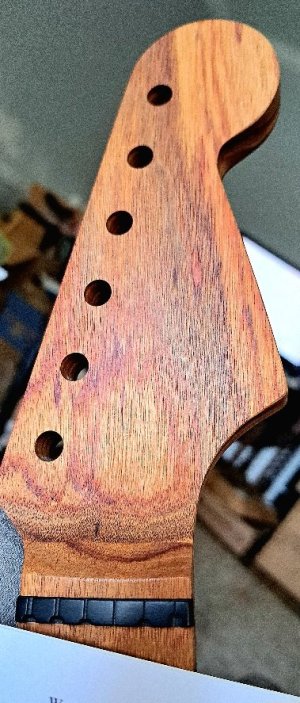nsurround
Newbie
- Messages
- 6
After receiving a new Warmoth unfinished tele neck I wanted to give it a vintage tint. The neck was fairly smooth and only lightly sanded with 350 grit. Wiped down the back of the neck with naphtha to clean any finger oil etc. I then applied a first coat of transtint color mix with 50/50 DNA and Lacquer Thinner. I immediately ran into some dark brown spot areas in and near the headstock and also at the bottom of the back of the neck. They also came thru on the front of the headstock (see attach photos). Normally if there were just a spot here or there on maple I would just keep on going and eventually apply a few coats of tru-oil. However not liking at all the what the current look/issue is and not sure what to do about it. Any tips on fixes or should I just contact Warmoth about the issue?



